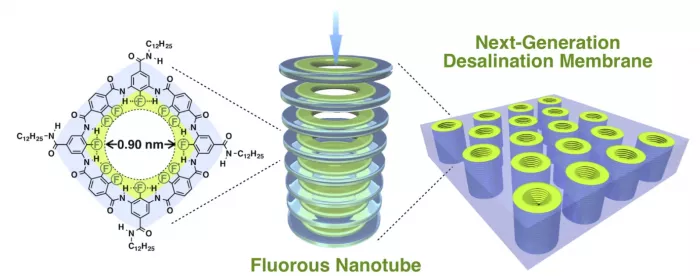Water covers 70% of the earth, so it is easy to think that it will always be rich** However, fresh water is very scarce. One technology designed to help produce more fresh water is desalination plants. Desalination of water is the process of removing salt from seawater to produce fresh water that can be further treated and safely used. A desalination plant converts about half of the water it receives into potable water.
The shortage of water resources is an increasingly serious problem in the world. In Africa alone, it is estimated that about 230million people will face water shortage by 2025, and as many as 460million people will live in areas with water resources shortage. A new study published in science on May 12, 2022 has found a new water purification method, which is 2400 times faster than the experimental seawater desalination device based on carbon nanotubes.
Although seawater desalination is a mature way to produce drinking water, it is accompanied by high energy costs. For the first time, researchers have successfully filtered salt from water using fluorine based nanostructures. These fluorinated nanochannels are more effective than traditional desalination technologies because they operate faster, use less pressure, are a more efficient filter, and use less energy.
If you have ever used a non stick Teflon coated frying pan, you may have seen how the wet ingredients slide effortlessly on the frying pan. Fluorine is a light component with inherent water resistance or hydrophobicity. It is an important component of Teflon. Teflon can also improve the fluidity of water by laying Teflon in the pipeline. Yoshimitsu Itoh, an associate professor of chemistry and biotechnology at the University of Tokyo, and his colleagues were curious about this behavior. Therefore, they were inspired to study how fluorine pipes or channels work on different scales, that is, nanoscale.

Researchers made nano fluorine rings by chemical methods, superimposed them and implanted them into the originally impenetrable lipid layer, which is similar to the organic molecules in the cell wall, so as to develop a test filter membrane. They developed a number of test samples, and the sizes of nano rings ranged from 1 to 2 nm. A human hair is almost 100000 nanometers wide. On both sides of the test membrane, Itoh and his colleagues evaluated the presence of chloride ions, one of the main components of the salt, to determine the effectiveness of their membranes.
The smaller channel in the test channel perfectly rejects the salt molecules entering. The larger channel is still better than other desalination technologies, and even the cutting-edge carbon nanotube filter. What really surprises researchers is how fast this process occurs. The sample is several thousand times faster than the typical industrial equipment, and about 2400 times faster than the experimental desalination equipment based on carbon nanotubes.
Because fluorine is negatively charged, it repels negative ions, such as chlorine in salt. But an added benefit of this negativity is that it can also break down so-called water masses, basically loosely bound groups of water molecules, so that they can pass through the channel faster.